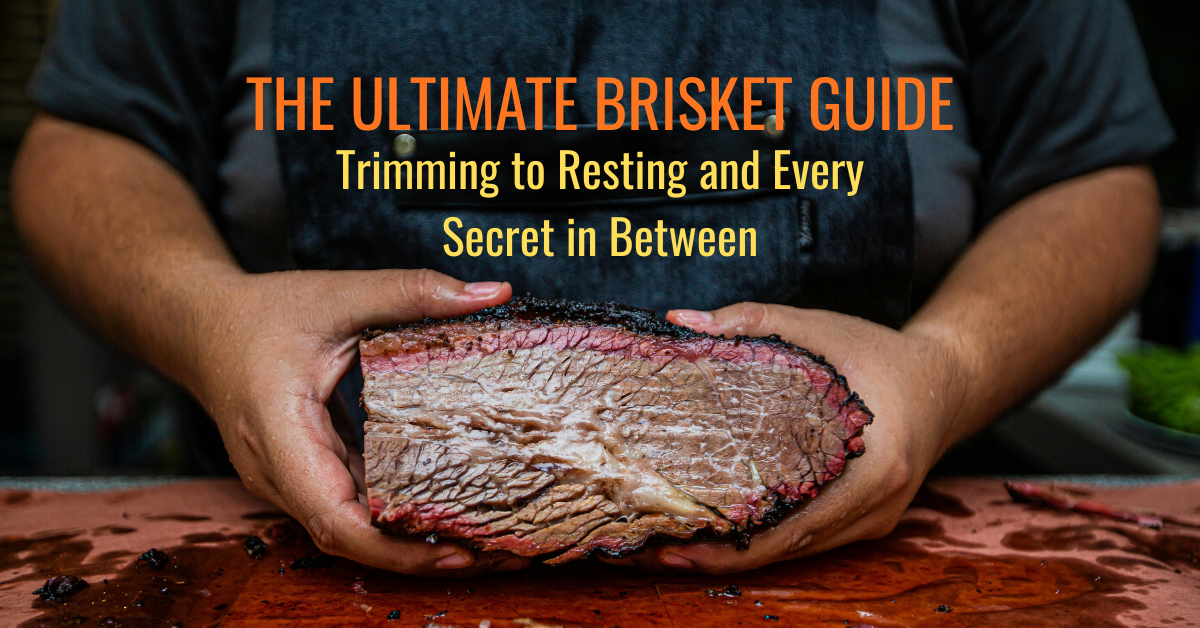You have your prime cut on the smoker, slowly transforming into a tender masterpiece. Hours pass, the aroma fills the air, and then you reach a crucial decision: how do you keep that meat from drying out?
Enter the debate every pitmaster eventually faces: spritzing vs. mopping. Both aim to keep meat moist and flavorful, but each works in a different way. Choosing the right method can change how your brisket, ribs, or pulled pork turns out.
This guide will help you understand when to spritz, when to mop, and when to skip them altogether.
What Is Spritzing? The Light Touch for Moisture and Bark
Spritzing involves lightly misting meat with liquid using a spray bottle. It has grown in popularity among pitmasters who want to keep meat moist while protecting bark development.
Advantages of Spritzing:
- Adds a thin layer of moisture without soaking the meat.
- Preserves bark, since the mist evaporates quickly.
- Reduces temperature fluctuations because spritzing is fast.
- Convenient, quick, and easy to apply.
Common Spritz Liquids:
- Apple cider vinegar for tang and tenderizing.
- Apple juice for sweetness, especially with pork or chicken.
- Water for simple moisture with no added flavor.
- Beef or chicken broth for savory depth.
- Custom blends such as apple juice mixed with vinegar, or water with a splash of bourbon.
When and How to Spritz:
Start spritzing once the bark has set, usually around the 2–3 hour mark, when the surface looks dry and mahogany-colored. Spritz every 45–60 minutes with a light mist. Avoid soaking the meat.
Pro Tip: If your smoker runs dry, spritzing becomes essential to prevent your meat from losing moisture too quickly.
What Is Mopping? A Flavor-Boosting Heavy Hand
Mopping uses a thicker liquid brushed or dabbed onto the meat with a mop-style brush. Unlike spritzing, mop sauces are designed to add bold flavor as well as moisture.
Advantages of Mopping:
- Adds strong flavors directly to the meat surface.
- Can enhance tenderness by helping break down connective tissues.
- Creates a rich, darker crust with a glossy sheen.
Common Mop Sauce Ingredients:
- Broth or water as the base.
- Vinegar for tang and tenderizing.
- Butter or oil for richness and browning.
- Worcestershire sauce for umami.
- Spices such as paprika, chili powder, black pepper, garlic, or onion powder.
- Optional sweeteners like brown sugar or honey for caramelization.
When and How to Mop:
Mop every hour to 90 minutes once bark has formed. Apply quickly to limit heat loss, brushing a thin layer instead of drenching the meat.
Considerations: Mopping requires longer lid-open times, which can cause greater temperature swings. Mop liquids may also soften delicate bark more than spritzing.
When to Skip Spritzing or Mopping
Not every cook needs hydration techniques. Sometimes the smoker and the cut of meat provide enough moisture on their own.
Reasons to Skip:
- Smokers with strong humidity retention, like those with large water pans.
- Short cooks, such as chicken pieces, that finish before drying out.
- Wrapping in foil or butcher paper (the Texas Crutch), which creates a steamy environment.
- When you want extra-crunchy bark without added moisture.
Pro Tip: Trust your eyes. If the surface looks moist and healthy, you may not need to spritz or mop at all.
Spritz or Mop? The Bottom Line
Both techniques have a place in the pitmaster’s playbook:
- Spritzing: Ideal for convenience, minimal heat disruption, and bark protection. Provides light moisture with subtle flavor.
- Mopping: Perfect for deeper flavor infusion and creating a darker, richer crust. Requires more attention but can enhance tenderness and taste.
The best way to decide is through experimentation. Try spritzing on your smoked chicken, mop your ribs with a flavorful sauce, and compare the results. There is no single correct answer, only the method that works best for your pit, your palate, and your BBQ style.
Final Thoughts
Mastering spritzing and mopping is about balance. Both can help you achieve juicy brisket, tender pulled pork, or flavorful ribs, but knowing when to use them—or when to skip them—is the real secret.
Spritz vs. Mop: Quick Comparison for Pitmasters
| Feature | Spritzing | Mopping |
|---|---|---|
| Application | Light mist with a spray bottle | Brushed or dabbed with a mop-style brush |
| Moisture Level | Adds a thin surface layer | Adds more liquid directly to meat |
| Flavor Impact | Subtle, background notes | Strong, bold flavors from spices and fats |
| Bark Effect | Preserves bark texture | Can soften bark, adds sheen |
| Heat Loss | Minimal (fast lid open) | More significant (longer lid open) |
| Common Liquids | Apple juice, apple cider vinegar, broth, water | Vinegar, broth, butter, Worcestershire, spices, sweeteners |
| Best For | Brisket, pork butt, chicken (when you want to preserve bark) | Ribs, pulled pork, pork belly, meats that benefit from sauce flavor |
| Frequency | Every 45–60 minutes once bark sets | Every 60–90 minutes once bark sets |
| Convenience | Quick, simple, minimal mess | Takes more time and requires sauce prep |
👉 What is your go-to method? Do you spritz, mop, or let the smoker do the work? Share your tips, spritz recipes, or mop sauces in the comments below. We love hearing how other BBQ enthusiasts keep the smoke rolling.




